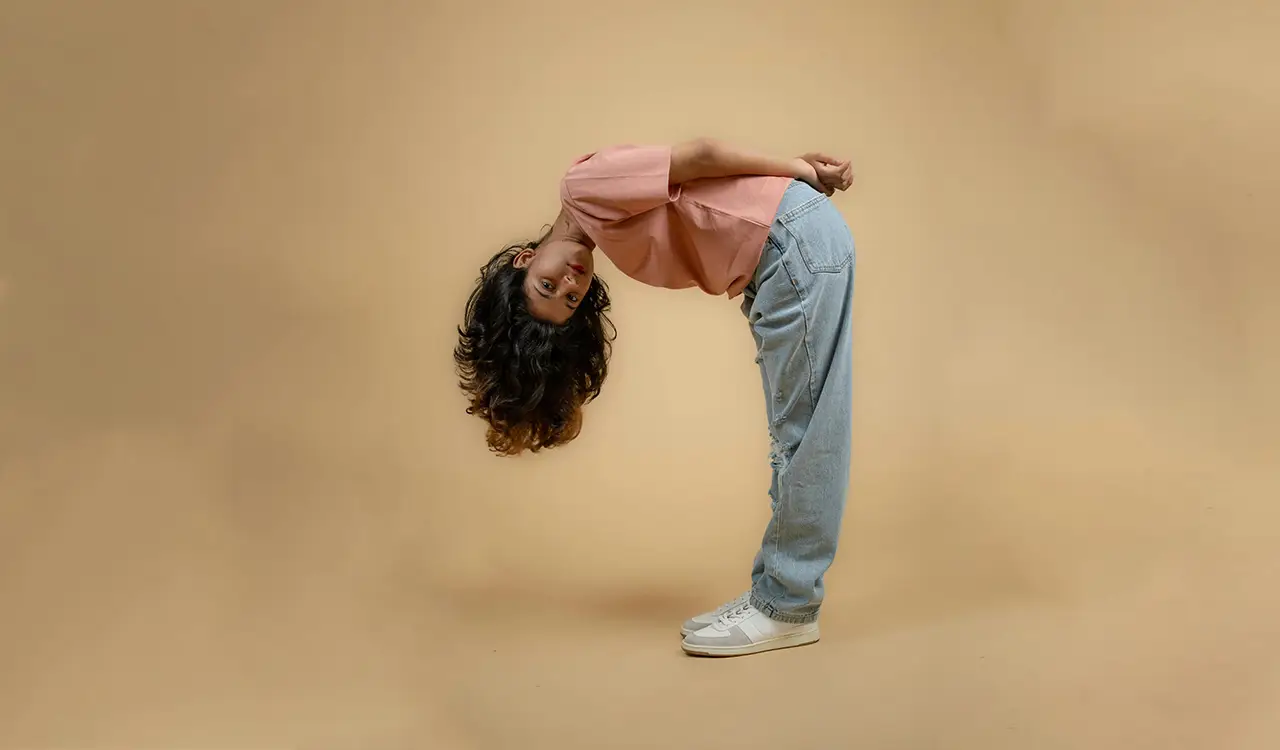This is a story about next gens resisting imposed denim trends. Anyone who was a teen during the 90s or early aughts remembers inflicting the baggy jeans silhouette upon unsuspecting adults in their life. The oversized silhouette of Jncos jeans and the giant Starter jackets that came with them was so crucial to some millennials’ fashion paradigm that many can quote a silver screen reverse fashion icon from memory:
“… I don’t want to be a traitor to my generation and all, but I don’t get how guys dress today. I mean, come on, it looks like they just fell out of bed and put on some baggy pants and take their greasy hair – ew – and cover it up with a backward cap and we’re supposed to swoon? I don’t think so.” – Cher, Clueless.
Maybe not for Cher, and clearly not for teens’ parents: oversize was tribal. With connections to rave culture and street style, giant silhouettes were associated with grungy, counterculture attitudinal leanings. They were also the uniform of choice for hip-hop cultural icons.
Retailers that have direct, conversational interactions with consumers and manufacturers will be better positioned to produce what consumers want. And a focus on the actual product, rather than shame-based media attempts at calling customers out-of-touch, will drive ROI in the years to come.
But the more things change, the more they stay the same. Now flash forward to the gender-neutral styles of 2024. Baggy jeans and mega hoodies are no longer relegated to male-identifying persons, Grammy winners, street culture, and those who are rave culture adjacent.
Let’s delve into today’s redux of mainstream denim silhouettes, how they look different, which demographics were first adopters, and what they mean for future fashion.
Skinny Jeans Had to Go
Want to know one of the greatest ironies of growing up as the wheel of fashion turns? It is watching styles you used to wear come back around, but they’re culturally relegated to be worn — not by you and your counterparts — but by your friends’ children. And I’m talking about my generation as well as my mom’s.
Let’s face it, when trends don’t change, consumers buy fewer new clothes. Skinny jeans have held on beyond their time. Millennial hipster culture was strong and came with a holistic lifestyle and skinny jeans were a steady uniform. Skinny jeans were indicative of the hipster dichotomy of foraging for berries, making their own beer, riding fixie bikes to work, vintage typewriters, and upcycling everything. So, when fashion houses first tried to make skinny jeans the next passé thing, many people resisted.
We’ve spoken before about how the fashion cycle has shortened, with trends turning over every few weeks, rather than each season. To hipsters’ credit, the skinny jeans candle burned longer than many of its fashion predecessors, with millennials and young Gen Xers clinging to skinny jeans long after fashion magazines began pushing trend turnover.
For nearly 20 years, skinny jeans took root starting around 2005 and stayed relevant until Covid put us all in PJs, loungewear and padded “nappable” earrings. That said, skinny jeans have migrated to fashion choices of older consumers and fashionista millennials were all too happy to jettison them. As one stylish, successful millennial businesswoman recently told us, “I wouldn’t be caught dead in skinny jeans.”
Next Gens vs Denim Trend Cycles
Next-gen consumers don’t want to feel like they’re being forced to buy new clothes by the powers that be. It can be a case of consumers versus the fashion industry and media: consumers want to keep wearing what’s in their closets. In the transition away from skinny jeans, the fashion industry tried everything they could in collaboration with the media to induce trend turnover.
Publishing denim trend roundups of XXL silhouettes in 2020 didn’t work. Using memes to shame next gens into buying new clothes didn’t work for most either. The fashion industry’s support of the XXL trend was an assumption about how young consumers would fall in line. Gen Z’s paradigm is one of individuality and sustainability, and it lives to stand out. In the end, the transition to today’s XXL silhouette requires a total rebrand.
Gen Z caved first, as they couldn’t resist the throwback feel they were seeing on hit TV shows like “Euphoria.” It wasn’t until wide-leg styles started showing up at Banana Republic and Anthropologie that millennials (and their older sisters) began to make the shift, after a lot of online and IRL bullying by the Gen Zs and Alphas in our lives.
Appealing to the Trendsters and Stalwarts
The unique historical conflict the fashion industry faced was in getting next gens on board with surrendering their skinnies in favor of baggy jeans and the XXL silhouette. Ready to have your mind blown? The fashion industry is already harkening back to skinny jeans, jeggings, and exaggeratedly cinched ankles.
Good luck with that. The pace of denim trend adoption is slower; not just for Gen Z consumers who rallied against their parents’ skinny jeans for years, but also for millennials and late Gen Xers. In the face of the death of the middle class and comparatively limited economic prospects, consumers aren’t taking trend cycles at face value. We’ve all seen the negative impact of fast fashion and we’re still hyper-focused on secondhand shopping.
Consumers won’t be shamed into buying styles we aren’t completely sold on. The old tactic of touting unflattering aspects of past trends doesn’t work anymore, either. Trend cycles are moving too quickly while adoption rates are moving too slowly. It takes years for trends to fully catch on with middle-aged consumers and the trend cycles are moving so quickly that, when compared to our dismal economic prospects, it makes sense why so many middle-agers are opting out.
In the current denim landscape, relevant silhouettes have as much to do with geography and social caste as they do with age demographics. There aren’t universally accepted trends, like the skinny jeans fanaticism from millennials that died down during Covid. The sense of individuality is stronger than ever, even in exaggerated denim silhouettes like jeggings and XXL fits.
Touchpoints
Navigating the modern denim conundrum requires a holistic understanding of the motivations that compel a specific demographic to purchase new apparel. Are a company’s core shoppers first responders to trends, or are they looking for classics that withstand the test of time? How can making positive wardrobe updates serve customers when style shame (think Cher) isn’t part of the equation?
In many cases, Consumer to Manufacturer (CTM) production, as seen on sites like Dupe.com, will be the answer. Retailers that have direct, conversational interactions with consumers and manufacturers will be better positioned to produce what consumers want. And a focus on the actual product, rather than shame-based media attempts at calling customers out-of-touch, will drive ROI in the years to come.





